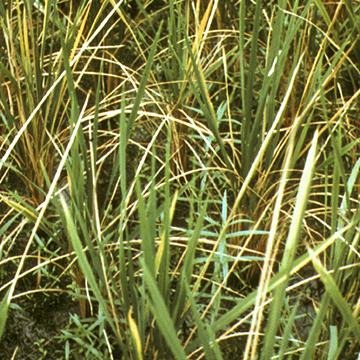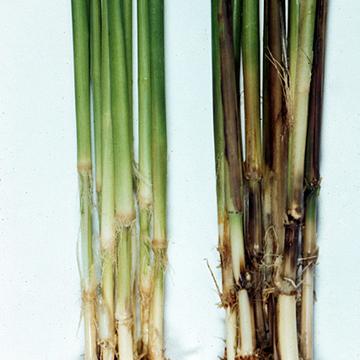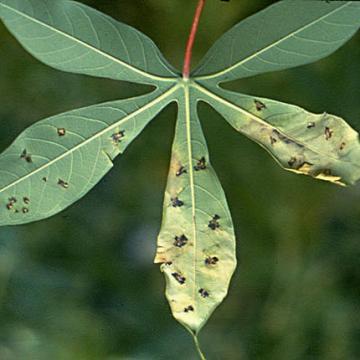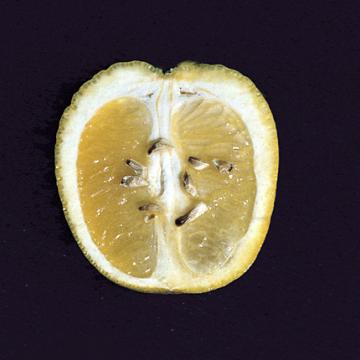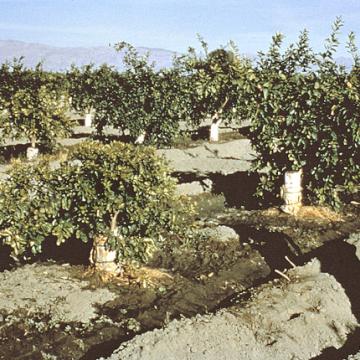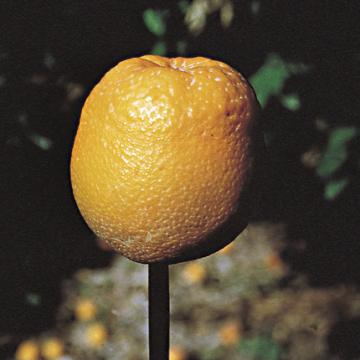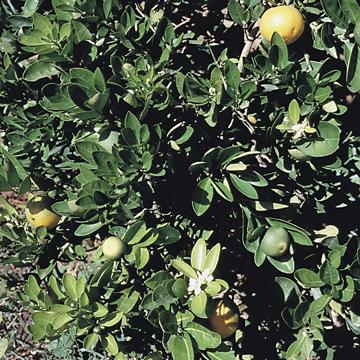DISEASE: Bacterial foot rot
HOST: Rice
The disease causes sheaths to turn dark brown and rot; dead leaves droop. Nodes, culms, and crowns also decay, and infected tillers are easily detached from the crown. Culms and internodes turn black.

Bacterial foot rot | Rice
DISEASE: Bacterial foot rot
HOST: Rice (Oryza sativa)
PATHOGEN: Dickeya zeae
PATHOGEN SYNONYM: Erwinia chrysanthemi pv. zeae
SOURCE: M. Goto
DISEASE: Bacterial foot rot
HOST: Rice
Decayed culms (right) and healthy culms (left). Leaf sheaths of infected plants exhibit dark brown decay and attached leaves turn yellow and wilt.
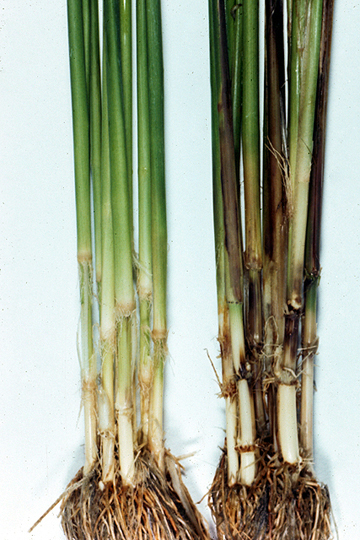
Bacterial foot rot | Rice
DISEASE: Bacterial foot rot
HOST: Rice (Oryza sativa)
PATHOGEN: Dickeya zeae
PATHOGEN SYNONYM: Erwinia chrysanthemi pv. zeae
SOURCE: M. Goto
DISEASE: Bacterial leaf spot (Bacterial necrosis)
HOST: Cassava
Cassava with yellowish leaves and water-soaked, angular spots. The disease is primarily on foliage, although the pathogen may invade stem buds and young branches.
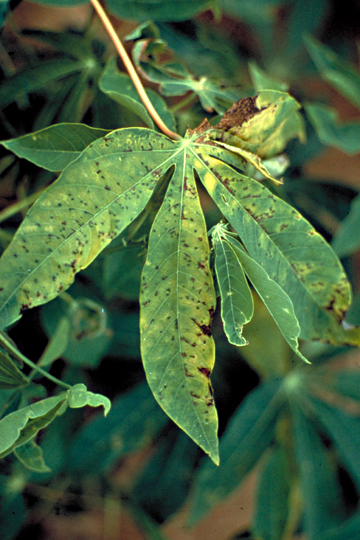
Bacterial leaf spot (Bacterial necrosis) | Cassava
DISEASE: Bacterial leaf spot (Bacterial necrosis)
HOST: Cassava (Manihot esculenta)
PATHOGEN: Xanthomonas cassavae
PATHOGEN SYNONYM: Xanthomonas campestris pv. cassavae
SOURCE: APS
DISEASE: Bacterial leaf spot (Bacterial necrosis)
HOST: Cassava
Cassava with brownish lesions and blackish edges. Leaves turn yellow with multiple infection sites.
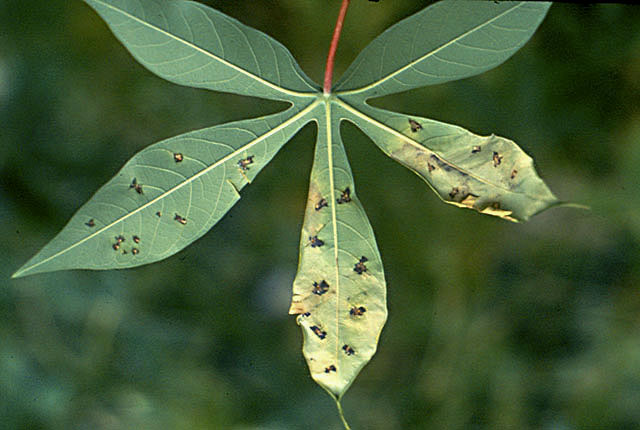
Bacterial leaf spot (Bacterial necrosis) | Cassava
DISEASE: Bacterial leaf spot (Bacterial necrosis)
HOST: Cassava (Manihot esculenta)
PATHOGEN: Xanthomonas cassavae
PATHOGEN SYNONYM: Xanthomonas campestris pv. cassavae
SOURCE: H. Maraite, A. Alvarez
DISEASE: Citrus stubborn disease
HOST: Citrus (sp. unknown)
Characteristic symptoms of thickened peel at peduncle end and aborted seeds.
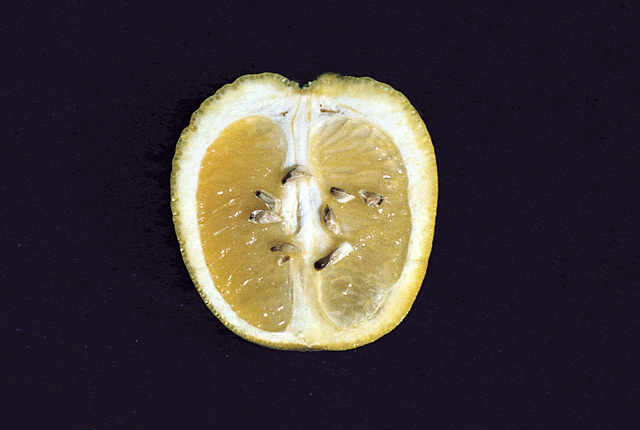
Citrus stubborn disease | Citrus (sp. unknown)
DISEASE: Citrus stubborn disease
HOST: Citrus (sp. unknown) (Citrus sp.)
PATHOGEN: Spiroplasma citri
SOURCE: APS
DISEASE: Citrus stubborn disease
HOST: Citrus (Orange)
Severely stunted sweet orange tree. Foliage is dense and abnormally upright. Leaves may be cupped and unusually thick. They also may be chlorotic and mottled.
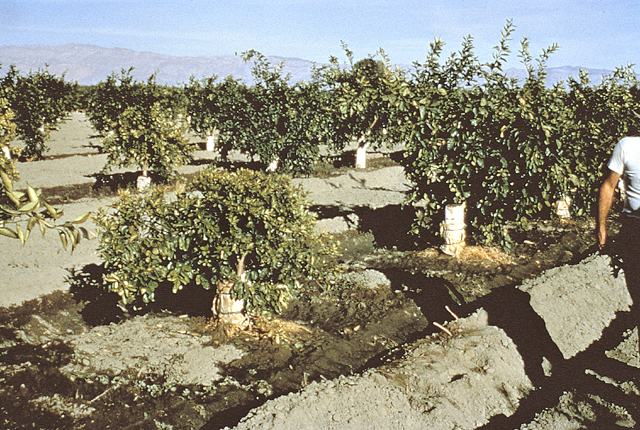
Citrus stubborn disease | Citrus (Orange)
DISEASE: Citrus stubborn disease
HOST: Citrus (Orange) (Citrus sinensis)
PATHOGEN: Spiroplasma citri
SOURCE: S. M. Garnsey
DISEASE: Citrus stubborn disease
HOST: Citrus (Orange)
Fruit from a diseased tree are frequently lopsided or acorn-shaped, usually few and small. They may not color at stem end.
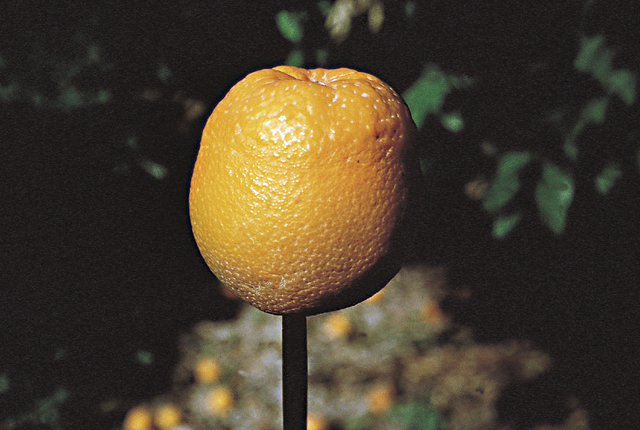
Citrus stubborn disease | Citrus (Orange)
DISEASE: Citrus stubborn disease
HOST: Citrus (Orange) (Citrus sinensis)
PATHOGEN: Spiroplasma citri
SOURCE: J. M. Bove, M. Garnier
DISEASE: Citrus stubborn disease
HOST: Citrus (Orange)
Sweet orange exhibiting off-season flowering and crop heterogeneity. Diseased trees generally have shoots with shortened internodes, which lead to rosettes with cupped leaves.
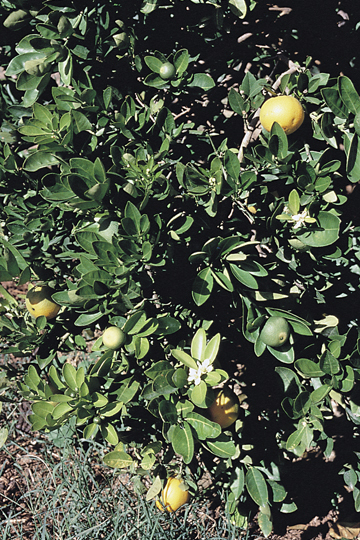
Citrus stubborn disease | Citrus (Orange)
DISEASE: Citrus stubborn disease
HOST: Citrus (Orange) (Citrus sinensis)
PATHOGEN: Spiroplasma citri
SOURCE: J. M. Bove, M. Garnier


